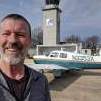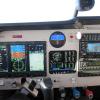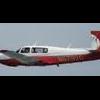Leaderboard
Popular Content
Showing content with the highest reputation on 09/13/2020 in all areas
-
Here is the P-51 and M20 C/D/E overlay picture. Can someone do the same with a M20M/R or M20U/V? That way the snout and tail will be in better proportion. The factory should have run this as an add years ago. Once don’t I’d love the file so I can print a high quality image of it for display somewhere. -Seth5 points
-
My alternator and wiring issue was finally solved and I thought detail what happened here so others may avoid the same issue in the future. The series of events is somewhat lengthy so feel free to skip to the bottom unless you're having a rainy day like we are in Florida. In Mid-June, I was flying from FXE to BED at FL230 when my LEFT ALT FIELD annunciation went solid red and the LEFT ALT FIELD breaker popped. As many of you know, the Bravo has dual 70 amp alternators as well as dual batteries. My JPI was showing 28.8v. I elected to continue the flight based on the redundancy and VFR conditions. The solid red is an indication of over voltage. When I arrived back in Florida I took the plane to my mechanic who did some tests with a volt meter and determined that the issue was with the alternator. I ordered a overhauled replacement from Falcon Aero through Aircraft Spruce. On a side note, Bill from Falcon Aero (I believe the owner), was great to deal with and I'd highly recommend them for your future alternator needs. I received the alternator in Mid July and wanted to get it installed by my mechanic prior to a long trip. However, my mechanic was tied up so I elected to go to a well known and respected Mooney service center (not in FL). They removed my old alternator and noticed some burning residue around the alternator and field wire. As part of the the installation process they also removed the diode at the end of the field wire for cleaning and examination. The diode was reinstalled along with the alternator. I started the engine, brought the RPMs up and one again the LEFT ALT FIELD breaker popped as well as a flashing red indication on the annunciator panel indicating no charge. They pulled the plane back in the hangar and began to troubleshoot. As part of the troubleshooting they pulled my voltage regulator down from swapped the plugs to the left side of the alternator was going to the right alternator and vice versa. This resulted in 24V at the end of the field on the left and nothing on the right. It seemed that my regulator was the problem. They offered to order me a new one for $2200. Prior to pulling the trigger, @kortopates recommended I get it repaired at Consolidated Air Supply. They made the repair a few days later for about $500. I plugged it back in the plane and sure enough, the same breaker popped. I sent it back to them to confirm that the regulator was still working properly and they confirmed that it was. At that point, I was starting to get in that depressed state where you feel like this problem will never be solved without tearing apart half the plane. I had another mechanic come to my hangar and troubleshoot without success. Furthermore, after their troubleshooting, I started the engine and now my regulator wasn't working at all (voltage would blow past 30v as I increased RPM). I didn't want to do any damage so we shut down the engine, swapped the regulator plugs (left side regulator to right alternator) and now it was working correctly but holding at 29.2 which isn't ideal. I decided I was done wasting time and money so I flew the plane from FXE to Don Maxwell at GGG since I had faith that Don, Paul, and his team could figure this out. It only took them a few hours to figure out that the diode at the end of the field wire was installed backwards and was in fact sending electricity in the wrong direction. At the same time, I had my old alternator bench checked just to confirm that it was in fact the initial cause of my issues. The alternator was apparently toast with brushes nowhere to be found. The regulator was being damaged due to the reverse installation of the diode. Essentially, the new alternator that I received was in perfect working condition and my issue would have been solved months ago if the diode had not been reversed. Don replaced the diode with a new one ($0.23), repaired my regulator which had been shorted out again, and now everything works perfectly. I'm telling this story just to help those in the future and not speak badly about the shop that did the work. I'm still in discussions with them after the thousands I've spent on this but I have no interest in talking about them here because these mistakes can happen. It's unfortunate (and sometimes can be very costly),4 points
-
4 points
-
4 points
-
Unlike Bob, I don't much care about fuel burn in climb or difference in total flight time going higher or lower. I do care about passenger comfort, and my experience in GA going cross country many, many times, in general going higher means less turbulence and a better overall trip. Especially with turbocharging it also means a more efficient flight because as you go higher your IAS goes down and you come down the drag curve. This becomes substantial as you get into the upper teens. Of course the other added benefit is your TAS goes up approximately 2% per thousand feet, so at, for example 17,000 feet, your TAS is 34% faster than at sea level.3 points
-
Omar, awesome plane! Mike you are the Hugh Hefner equivalent in the Mooney world! Always surrounded by the hottest planes:) I want to go to one of your hangar parties and see what shows up in the grotto!!3 points
-
This is all my good friend Omar, Dan. I just happen to be fortunate to have a great set of friends like him, and not because of his beautiful plane, because of his beautiful character.3 points
-
I assume the cost of storage in CA drive the cost to some extent, but operating an IO 360 powered Mooney 100-120 hours per year doesn’t cost me anywhere near $20k. Get a decent 201. Fly it. If you decide you want more capability later, sell it and go turbo. The 201 will retain value well while not costing much to operate.3 points
-
If you’re adding up exact fuel prices and round trip costs to compare between SWA and a GA airplane, you’ll be very disappointed with GA in the long run. You won’t beat the airline on cost. You buy a GA airplane because you love it, not because it saves $$. It won’t. Especially tied down outside. Not trying to be a jerk, just making sure you go in eyes wide open. A J will cost about $20k/year to operate 100 hours/year all in.3 points
-
Through work, I won tickets to the Chiefs' Game on this past Thursday. After I committed to going and using the tickets, I checked the weather and discovered that the forecast was Low IFR for all of Thursday and Friday. The forecast for Downtown Wheeler Airport had a 700 foot ceiling. I thought about changing my personal minimums down to 1,000 feet and "going for it!" But a cooler portion of my brain persevered and I decided to go on Delta's 0600 flight instead. It was solid IMC from takeoff to over 10,000 feet and then between layers the rest of the way to KC. When we landed at MCI on Thursday morning, I asked the captain where he broke out - "about 350 feet". Glad that I have a portion of my brain that is founded on using facts, not just gut and go-for-it.2 points
-
Don. I didn't intend to give the impression that I always go for speed. I was just responding to his question about saving time by going higher. Just tried to point out that higher is not necessarily faster. And of course, if you want to go higher for a better ride for the passengers then you have to consider whether or not they like sucking on a hose. If there are no smooth altitudes, I'll pick the best I can find and then slow down to minimize the size of the bumps. My priorities, in order, when picking an altitude: Don't hit the ground. No ice. Smooth ride. Flight time/fuel burn. My favorite choices are 3500 or 4500 for short flights and 7500 to 10500 for long flights.2 points
-
Some people don’t like to share personal information in public environments.... Especially when it is giant numbers like avionics... Often, some information is not part of public record, as a special price for a certain customer may not be available to everyone.... Sometimes, you may have to befriend somebody enough that they share this kind of detail, but they may do it via a pm... Are you expecting anything different? Keep in mind, not everyone is hiding behind a screen name, with absolutely no avatar data shared at all... Best regards, -a-2 points
-
I used to avoid AAPL devices because of cost.... Then I began enjoying AAPL devices because of simplicity... (My aged brain enjoys simplicity...) So... I get a new2me iPhone hand-me-down every now and then.... A team work kind of thing at my house... When my phone starts to show its age, her phone starts looking really good to me... So... Based on Dan’s request... I went to the I store to see what’s on sale... The I store shows every I device I ever bought.... makes it easy to upgrade based on what I have already.... I’m using a 6s currently as well... Check out the price with the trade in... pretty low, knowing the new phones will be out this fall... Keep in mind, our 6s(s) probably don’t have much exchange value... note that little asterisk at the end... * Best regards, -a-2 points
-
2 points
-
Every model has a trade off distance for both time and fuel burn. For time. If I climb 1000', how long will it take me to do that and how much slower will I be going? If it takes 1 minute and I'm going 30 knots slower I'll be 1/2 mile behind the plane that stayed at the lower altitude. Can I make up that difference in the descent? Depends on how smooth the air is and how much bouncing around I'm willing to put up with. Let's say that yes I can. Climbing 1000' will gain me about 2 or 3 knots in a K. If I do that for 2 hours, I'll be 4 to 6 miles ahead at the end of 2 hours which will save me about 2 minutes. That's about 1 minute/hour of cruise for each 1000' of climb assuming the winds are the same (which they rarely are). Also, every 1000' I climb will increase the time/distance I spend climbing and descending and reduce the time I spend cruising. Therefore there will be a diminishing return as I go higher and higher. A 5 knot less favorable wind would wipe out any benefit of climbing. On the other hand a 5 knot more favorable wind would add to the advantage. So bottom line, I would pay more attention to wind direction and speed than planning on higher airspeed to save me time. For fuel. Each 1000' of climb cost you about .25 gallons. You won't make much of that up in the descent because there is a much larger increase in burn rate during the climb than there is a decrease in burn rate during the descent. How far can I fly on .25 gallons? About 4 miles. If my speed increases by 2 knots on the same burn by climbing, I'd need to spend 2 hours cruising to make up the difference. I've found, that for fuel, the break even point is about 300 NM. All other factors being equal, much less than 300 miles I want to stay as low as practical. Much beyond 300 miles, I want to go high.2 points
-
The PS 7000BT is a slide-in replacement for your audio panel and adds Bluetooth. I wouldn’t spend any money fixing a 20 year old audio panel. https://www.ps-engineering.com/pma7000bt.shtml @Mscheuer2 points
-
Amazing, 15% difference in size but four times gross weight. And 5x hp I flew one of these and without weapons armor and drop tanks the climb rate is 7k minute!! To heck with a turbine put a RR on a Mooney!!!2 points
-
2 points
-
2 points
-
We have a M20K 262, which means it is a 231 converted to the 252 engine by STC. It cruises best at 11.5 gallons per hour, regardless of altitude. With the turbo, altitude is chosen based on winds, clouds, and comfort / turbulence. I use these numbers for real-world flight planning: 155 KTAS at 5,000 feet 165 KTAS at 9,000 feet 180 KTAS at 15,000 feet The plane has the same indicated airspeed all the way up and likes to settle in between 140 and 145 KIAS depending on load and smoothness of the air. When there's a nice tailwind and oxygen in the tank we'll go high. When there's a headwind, we climb just until smooth air usually and stay there. Typical trip is high going east and low going west unless you get lucky. Having flown both a naturally aspirated C Mooney and now the turbo K, I would not give the turbo up. It's not about speed or fuel burn, but comfort and options. Compared to overall cost of ownership the additional money is not that much. You might keep an eye out for a 262 converted 231. There are not many of them but they sometimes come up in your price range and are usually a little cheaper than a factory 252. Most have the long range 105 gallon tanks which you can use to tanker a ridiculous amount of fuel when you're flying solo.2 points
-
I'm going to pile on with recommending an F. The way you've described the conditions you will fly in there's no need for a K and I think a J is just spending money you don't need to. The F will perform nearly the same. Further, I don't think the K is going to, practically speaking, reduce your commute time significantly. I paid around 1/3 of your budget and got WASS and A/P...but no fancy glass stuff; just wasn't important to me. Rags is spot on with the annual budget: you need to be good with 20K per year. I've been a bit under that, but I am willing to get my hands dirty.2 points
-
Well I got my PPL in Tehachapi, I just thought that was what flying is supposed to be!2 points
-
I’m not sure why no one has suggest to Willie that an E model might make more sense. 80% solo time, as fast (some faster) than a J model. Less that half the purchase cost, less insurance due to lower hull value, available with Johnson bar..... some are TN equipped. .. 377miles doesn’t make any sense to be for a K. I wouldn’t want to leave $120k sitting on tiedowns...2 points
-
The one on my C was hand cut from the sidewall of an old tire. Never seen one of them fancy springs before . . . .2 points
-
Thanks for the great posts ~ you and I are in parallel, my O2 went under the knife last week. I went through a similar evaluation, and came up with pretty much the same conclusions. The reason I went with the third 275 as an MFD is a little different – in my install, AI failover will go to the MFD, not the HSI. This allows you have a fully functional and independent AI plus a separate HSI in the event that there’s a primary AI failure, rather than using a combined instrument. With this arrangement the HSI can be just a base unit; it does not need AHARS. The two full blown boxes are the AI and MFD. The MFD is going where my old backup electric AI was in my panel. i’m happy with my engine monitor, all of that may change if my Moritz gauges fail, however. Making the third an MFD will allow for simultaneous display of Sirius and ADS-B weather ~ I find myself doing a lot of flipping back-and-forth between these two on the 750 a lot in the soup when navigating around the cells in the southeast. I hope This works to alleviate some of that. Dodging convective cells is something I know you’re very familiar with. And having lived through at least a dozen hurricanes on the ground, I have no desire to chase one in the air ! I look forward to your next installments and I will post pics when I get some. I agree with you on one other thing – when they tear into a panel, the result is a frightening sight. Cheers – Bob2 points
-
Absolutely agree with you Greg_D!!! I have mine in the shop for dual 275 install and can't figure out who missed that basic ergonomic issue at Garmin. Even left handed pilots have to use their right hand for the radio stack, throttle, etc while keeping left on yoke. I doubt that they swap hands to reach the left sided knobs on the 275's. Maybe they thought that most pilots have gotten used to moving across the HSI to turn the course (OBS) knob and so would find it similar with the 275's. Even so, turning the OBS know happens much less frequently than turning the heading bug. I wonder if in some near future software upgrade they can rotate the display 90 deg clockwise allowing the whole unit to be turned 90 deg CCW to end up with the knob on the lower right. ????2 points
-
Ever go across Wyoming in the afternoon in a J? Best to have a helmet on. The Tehachapis in the afternoon? Turbocharging has benefits besides the weather; increased TAS and turbulence mitigation to name a couple.2 points
-
Improved version attached - same model, better ergonomics - macro-free, so much smaller size IO-550N Performance Calculator.xlsx2 points
-
Just something else I thought of that I experienced during the bushfires in relation to visibility reported at uncontrolled airports. I found that when there was thick smoke in the area of the destination airport, the viz that would be broadcast electronically on what we call the AWIS (your terminology ASOS) was grossly understated as the sensors measure moisture and smoke is not moisture. Eg: viz recorded at 5,000 metres was actually less than 100 metres due to smoke. Some RNAV approaches ended up as missed approaches. The USA may have better sensor technology to be able to detect smoke viz as well as moisture, however if not, it should be a consideration when flying to such airports.2 points
-
Before the shutdown, I was commuting in my J between KMYF and KSJC/KPAO. Like you, I planned to take SWA if there was icing, convection, 0/0 conditions etc. and ended up on SWA maybe 30-40% of the time. Each one way trip in the J on average took 2.5-2.7 and burned about 25 gal. I like the reliability of the IO360 on the J and never had to scrub a flight for a maintenance issue. I am sure with a Bravo, FIKI, etc. I would have relied on SWA less but I am ok getting on a 737 when conditions are beyond the capability of the J.2 points
-
2 points
-
1 point
-
I did a fare bit of my early flying down in south Georgia, a number of Ag operators had wig-wag on the nose lights of the AT-802s they flew. A few times I found myself only seeing them because of the nose wig-wag lights. I also fly very often around the ATL class bravo, I will do just about anything to be more visible.1 point
-
1 point
-
Actually the skeleton outline of just the M20 with the P51 not there, would make a great breast stitch emblem for a polo short.1 point
-
I have been very blessed that so many great people let me take their beautiful aluminum mistresses for a ride. Im looking forward to climbing aboard this beauty1 point
-
I flew my 252 from Denver to Manhattan, KS today. You can find it on FlightAware. I was at 25" MP, 2500 RPM, 9.5gph at 17,000 ft.1 point
-
For our J our fixed costs have been about $8000 or $9000 per year. That's about $3000 for hangar, $3000 for annual, and $2000 for insurance plus some other small expenses. We save $30/hr for hour related expenses, so my operating cost is roughly $80/hr.1 point
-
What year and model Mooney? As I recall you are correct a crow foot protrudes too much. I took a sacrificial socket grounded it down enough to fit over the fuel tubing and had friend wield sacrificial socket extension to the sacrificial socket. But it seems to me I had remove the fuel line at the firewall once before I made a special sacrificial socket tool. Next time I am down at the airplane I take a picture. James '67C1 point
-
I was in this same boat in March-June of this year. I was trying to stay under $75k. It's very difficult to find a clean airplane. Finding one that has the right mix of avionics, engine time, damage history, and aesthetics is straight up unicorn hunting. So, first lesson: The perfect airplane doesn't exist. You're going to compromise on something. (For me it was slightly higher engine time than I wanted, and no modern autopilot....I at least have an autopilot (Brittain with altitude hold, which a lot of people here would probably love to have) but it's a little archaic. Second lesson: be ready to move fast. I got excited about a C model in my town that was posted here on MS. I had setup a time to see it within a couple of hours of being posted, and was going to see it the NEXT DAY....and before I even went to bed that night the owner messaged me and told me it was sold. Third lesson: you might just get lucky. My airplane was under contract the first time I inquired about it. Still I gave the guy my info and asked him to let me know if anything changed. Well, something changed...so he reached back out to me. I put a deposit on the airplane the next day, sight unseen. Lastly, financing is pretty easy. I had it built up in my head that it was going to be easier to just pay cash, but I talked to a couple of banks anyway, and ultimately decided to use a little leverage. The difficulty can be described somewhere between "harder than a car loan" and "a lot easier than a home mortgage". I had a great experience with BANK out of Iowa. Met them a few years ago at OSH and just happened to keep a little swag microfiber cloth on my desk that had their info. Daniel Steiner was fantastic to work with and their rates were as good as I can find anywhere. www.bank.bank Highly recommend.1 point
-
The decision we made that since we were going to get a new prop anyway, we might as well go with the Top Prop. We installed it yesterday. Installation was a moderate pita. Getting a torque wrench on the two studs that are behind the prop required a creative extension. First flight report: 1. Definitely quieter. Because I had to fly 2.5 h near the airfield to break in a new cylinder, I had ample opportunity to listen. Objective proof. Even with ANC headset, I had never before noticed that closing the cowl flaps reduces cabin noise. I noticed it yesterday. Novel finding. There is a lot of low frequency rumble associated with open cowl flaps on our C. Another data point: on this morning's flight, my co-pilot and I took off our David Clamps, and were able to actually have a conversation. Never even wanted to try that with the old prop. With the old prop our aircraft was frighteningly loud in the cabin at cruise. With the new prop it is just loud. The wind noise around the door seems to be the largest component of the noise budget now. 2. Climbs faster? The takeoff roll seems about the same- Hartzell says it increases 3% with this prop. But once it gets going, it seems to climb better. With old prop 600-700 fpm at 95 kias was typical. This morning we were climbing at a bit more than 700 fpm at 100 kias. Need more obs, but it does seem to perhaps have increased the rate of climb. 3. Faster in cruise? Maybe 1 kt. Yesterday during cylinder break-in I flew 1.5 h as 75% power back and forth across the field about 15 nm each way. The GNS430W TAS calculator consistently showed 141-143 kts. With the old prop it used to show 140-143 kts. One flight doesn't allow this conclusion. It isn't much faster if at all. Hartzell doesn't advertise it as faster, they advertise it as "more efficient". Maybe that means that we can get the same cruise speed turning it a bit slower. I did play with that a little bit, but results were inconclusive. 4. 100's of knots faster on the ground. The ramp appeal is undeniable. The scimitar blade design and new pointy spinner looks high speed. 5. Gone is the 100 h ECI AD. Won't miss that. 6. The striped design fits in with the OTreeLemur motif. I think we might paint a bird chaser spiral on the spinner!1 point
-
Yeah but I could think of worse places being stuck than Catalina:) Hopefully in a few weeks we can meet up there. Sent from my iPhone using Tapatalk1 point
-
This is a fascinating and somewhat terrifying issue with which I was unfamiliar until I just started reading about it. I learned that the anerobic bacteria and fungi need a water-fuel interface to grow. They float at that interface and once the water is removed they cannot survive. So as long as your tanks remain dry I doubt you'd have a recurring problem. Even if a little water gets in your tank at a later date, the relevant microbes from this contamination should be dead after they were deprived of water. The issue is much more common for Jet-A than for 100LL, but is very possible with the latter - auto gas stations have to deal with it too. It seems very clear here that there was significant sediment, either organic and/or inorganic in nature, that was stirred up into suspension a bit above the level of the unusable fuel at the bottom of the tank not long before the last usable bit was dispensed to you. It's not surprising that others did not experience the same contimation in fuel dispensed from the same tank. I'm not sure what's going on with progressive loss of the blue dye but there is clearly some chemical interaction between the dye and a component of the sediment. I'd document everything very carefully here, and the FBO should be on the hook for your trouble and expense. Given the amount of liability they face related to fuel contamination, I'd think they'd be VERY interested in your troubles and want to address any issue with sediment at the bottom of their tanks ASAP. It also seems like their insurance company should be covering your repairs including thorough cleaning of your tanks and fuel system.1 point
-
Watch the EGT numbers. When they stop increasing and start going back down, you've peaked. The cylinder with the arrow over it should be the first one to peak--use that one if you fly ROP, and richen on up. For LOP, use the last cylinder to peak as your reference, and keep leaning.1 point
-
My first career was as police officer, much of that doing collision investigations. I can only speak to the specifics of Arizona law, but they're generally similar around the US (because they're based on Federal guidelines). In AZ, that truck's driver would absolutely be responsible for the collision. The "speeding" statute used to cite drivers for excessive speed is the same one used to cite a driver who rearends a vehicle in front...or who loses control and hits a tree. The wording is along the lines of "operating a vehicle at a speed greater than reasonable and prudent for the conditions that exist, or may exist, on the roadway." As others have said, it's a crappy ending to a great emergency landing...1 point
-
I think there are various bugs in the forum update like this. So far most seem to be related to mobile browsers. Hopefully the folks at IPBoard will have an update soon! Craig1 point
-
1 point
-
Does anyone else besides me wish that Garmin had put the control knobs on the 275s on the bottom right hand corner of the instrument, instead of the left? I usually fly with my left hand and use my right hand for the avionics and engine controls, etc. It just seems like it would require less reaching around the yoke if they were placed on the right side.1 point
-
For a smakl share of the proceeds. Lawyers used to take a third, now many of them take half . . . . "Sharks" is an insult to a majestic sea animal!1 point
-
remove that hose and look behind it in that area for a pair of white wires. Each goes into some 1/4" or 3/16" clear plastic tubing, and they are zip tied to a tube in that vicinity. inside each of the plastic tubes is a diode, soldered to the wire. The solid wire breaks at the diode. Or at least mine did. I found this while searching for an intermittent no trim condition. My partner was holding down the trim switch and it wasn't working. While lying on my back in the copilot footwell, my left elbow hit the side of the plane and the trim began working. Eventually we found it.1 point





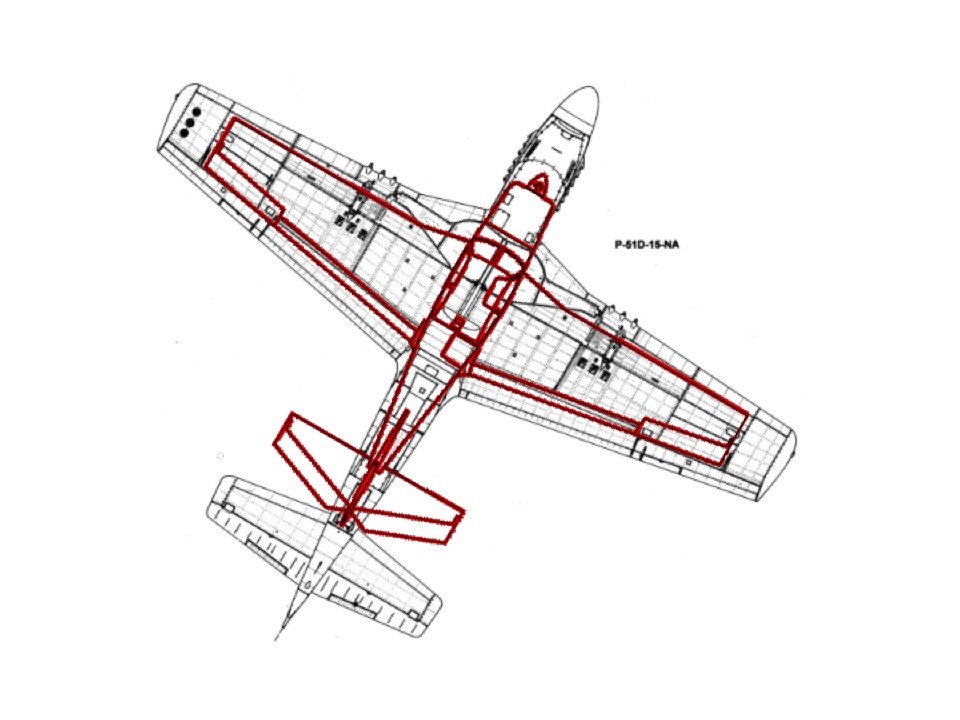
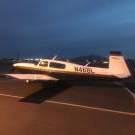


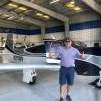
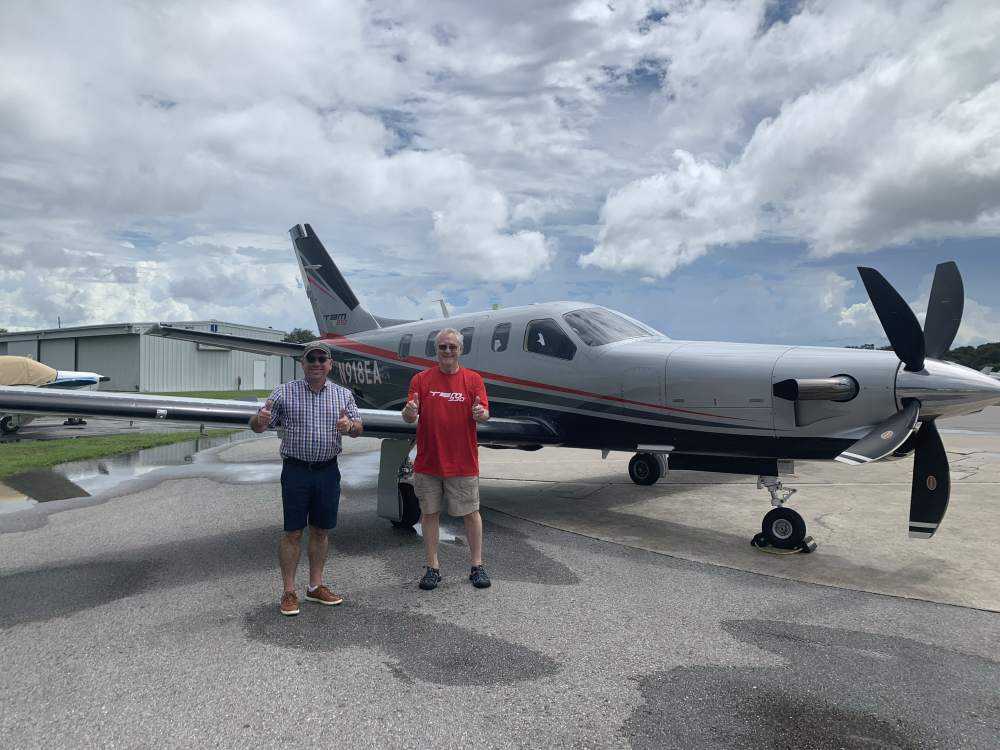












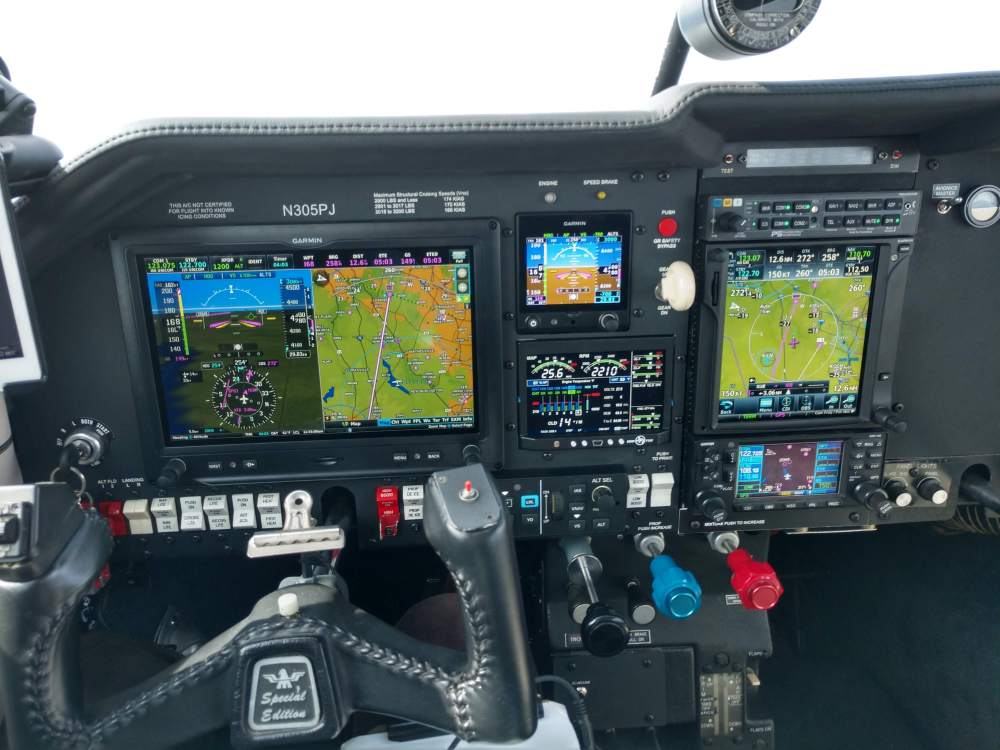
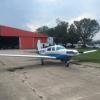


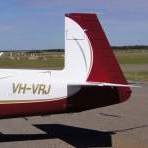
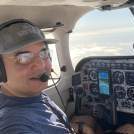


.thumb.jpg.44bc5ad17b44ec09b48bdca2a82f7a76.jpg)




